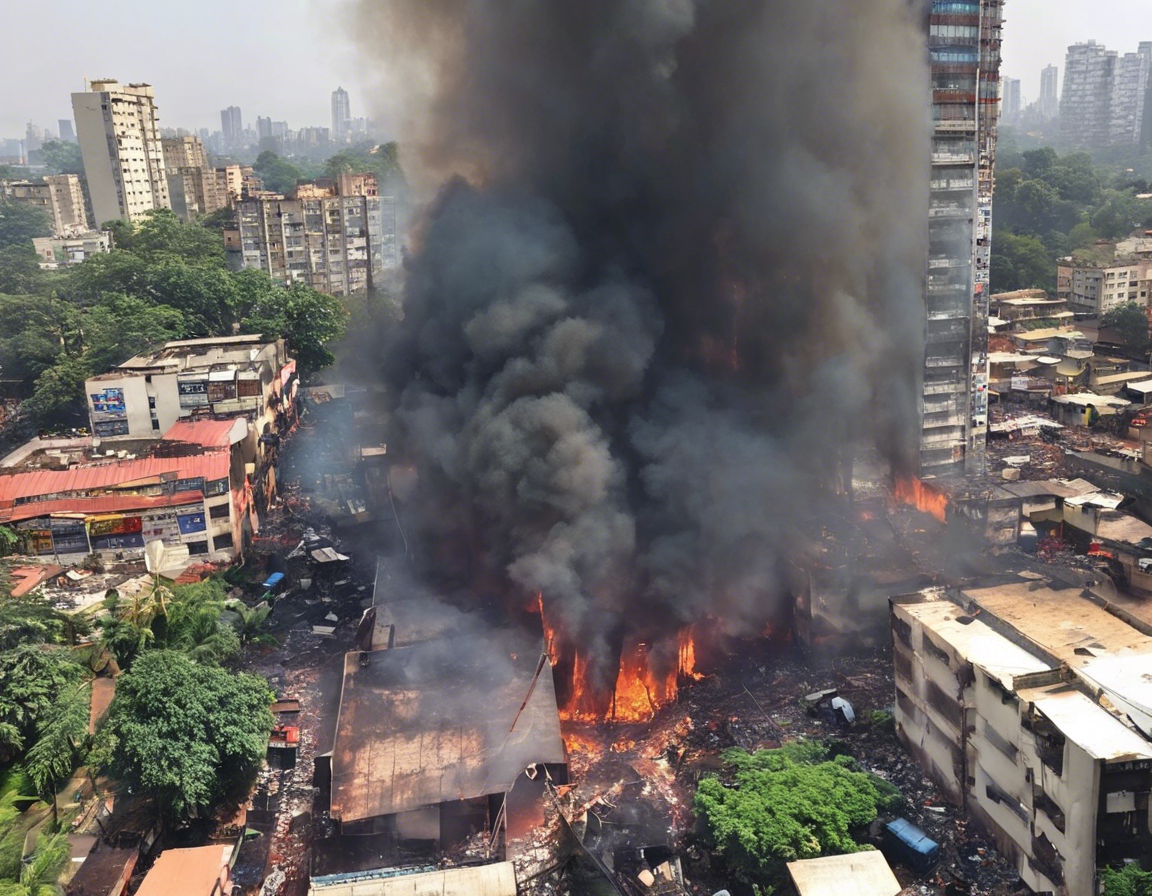The recent fire incident in Mumbai’s Kandivali area has brought to light once again the pressing issue of building safety and fire prevention measures in the city. The tragic event, which took place at a commercial building, resulted in multiple fatalities and injuries, leaving the community in shock and mourning. In the aftermath of such a disaster, it is crucial to examine the causes, consequences, and most importantly, the preventive measures that can be implemented to avoid similar incidents in the future.
Understanding the Incident
The fire in Kandivali highlights the vulnerability of densely populated urban areas to such disasters. Initial reports suggest that the fire started on one of the lower floors of the building and quickly spread due to various flammable materials present in the vicinity. The lack of proper fire safety equipment, inadequate emergency exits, and the absence of a robust evacuation plan further exacerbated the situation, leading to the loss of lives and property.
Causes of the Fire
Several factors could have contributed to the outbreak of the fire, including electrical faults, substandard wiring, improper storage of flammable materials, or even negligence on the part of the building owners or occupants. It is imperative to conduct a thorough investigation to identify the root cause of the incident and hold those responsible accountable for their actions.
Importance of Fire Safety Measures
Fire safety is a critical aspect of building management and urban planning. Adequate fire prevention measures, such as installing smoke detectors, fire alarms, sprinkler systems, and emergency lighting, can significantly reduce the risk of fires and minimize their impact when they occur. Regular inspections, maintenance checks, and staff training are also essential to ensure a quick and effective response in case of emergencies.
Preventive Measures
To prevent similar tragedies in the future, authorities and building owners must prioritize fire safety measures. This includes:
- Conducting regular fire safety audits and inspections.
- Ensuring compliance with building codes and regulations.
- Installing and maintaining fire detection and suppression systems.
- Implementing adequate training for staff and residents on fire safety protocols.
- Developing and practicing evacuation drills and emergency response plans.
Community Awareness and Engagement
Building a fire-safe community requires active participation and collaboration from all stakeholders. Residents should be educated about fire safety practices, encouraged to report any potential hazards, and trained in basic fire-fighting techniques. Community drills and awareness campaigns can help raise preparedness levels and foster a culture of safety and vigilance.
Conclusion
The fire incident in Kandivali serves as a grim reminder of the urgent need to prioritize fire safety in urban areas. Proactive measures, stringent regulations, and community involvement are essential elements in preventing such disasters and minimizing their impact. By taking concrete steps to enhance fire safety standards, we can ensure a safer environment for all residents and businesses in our cities.
FAQs
- What should I do in case of a fire emergency?
- Remain calm and evacuate the building using the nearest exit.
- Crawl low under smoke if necessary and cover your nose and mouth.
-
Do not use elevators and alert others as you evacuate.
-
How can I prevent fires at home?
- Avoid overloading electrical outlets.
- Keep flammable materials away from heat sources.
-
Install smoke detectors and fire extinguishers in key areas.
-
What are some common causes of fires in buildings?
- Electrical faults or short circuits.
- Improper storage of flammable materials.
-
Negligence in handling open flames or cooking equipment.
-
Why is it important to have fire drills?
- Fire drills help familiarize occupants with evacuation routes.
-
Practice improves response time and reduces confusion during emergencies.
-
Who is responsible for ensuring fire safety in buildings?
- Building owners are primarily responsible for implementing fire safety measures.
- Authorities conduct inspections and enforce compliance with regulations.
